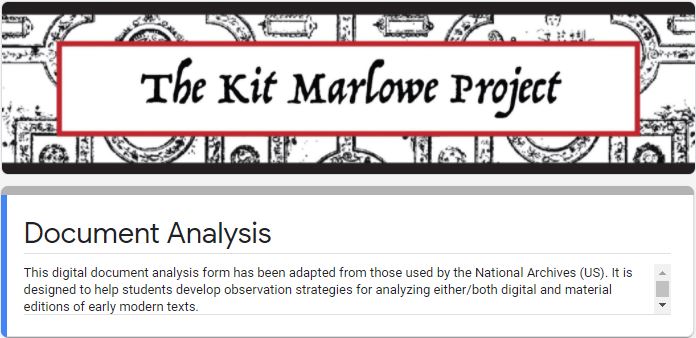Learning how to observe and describe a text’s discrete features prepares one for any kind of editorial project. The document analysis questionnaire linked below is designed to help one gather preliminary information about a text and make hypotheses about its audience and the conditions of its production.
When working with digital archives, it can be difficult to ascertain basic textual features including bindings, size, and more. Some of these questions can be answered by checking the metadata in sources like The British Library’s English Short Title Catalog (ESTC) and EEBO-TCP (Early English Books Online – Text Creation Partnership).
Pro-tip: Ascertain the library from which the facsimile or transcription you are working with came from. Then try accessing their online catalog and exploring their metadata; often, this information will be quite comprehensive. Here are just a few archives one frequently comes across when working with early printed texts: Folger Shakespeare Library, Hamnet, Huntington Library Online Catalog, Bodleian Library & Radcliffe Camera

This document analysis questionnaire can be used in either physical or digital archives to note specific features of a text, develop one’s observational skills, and make deductions about an artifact’s audience and conditions of production.
The GoogleForms Document Analysis questionnaire linked below has been designed to gather data for students enrolled in Kristen Abbott Bennett’s students at Framingham State University. Please be aware that any form submissions entered here will be sent directly to her account.
Please note that all of the foregoing teaching resources have been authored and should be cited accordingly. The Kit Marlowe Project by Kristen Abbott Bennett is licensed under a Creative Commons Attribution-NonCommercial-ShareAlike 4.0 International License.

